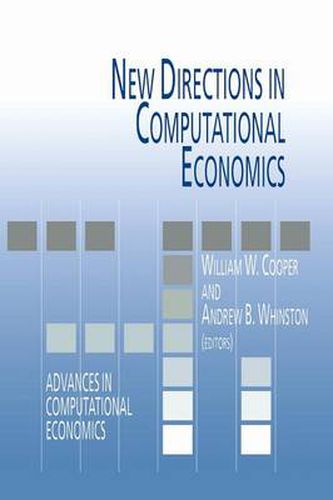Readings Newsletter
Become a Readings Member to make your shopping experience even easier.
Sign in or sign up for free!
You’re not far away from qualifying for FREE standard shipping within Australia
You’ve qualified for FREE standard shipping within Australia
The cart is loading…






This title is printed to order. This book may have been self-published. If so, we cannot guarantee the quality of the content. In the main most books will have gone through the editing process however some may not. We therefore suggest that you be aware of this before ordering this book. If in doubt check either the author or publisher’s details as we are unable to accept any returns unless they are faulty. Please contact us if you have any questions.
New Directions in Computational Economics brings together for the first time a diverse selection of papers, sharing the underlying theme of application of computing technology as a tool for achieving solutions to realistic problems in computational economics and related areas in the environmental, ecological and energy fields.
Part I of the volume addresses experimental and computational issues in auction mechanisms, including a survey of recent results for sealed bid auctions. The second contribution uses neural networks as the basis for estimating bid functions for first price sealed bid auctions. Also presented is the “smart market’ computational mechanism which better matches bids and offers for natural gas.
Part II consists of papers that formulate and solve models of economics systems. Amman and Kendrick’s paper deals with control models and the computational difficulties that result from nonconvexities. Using goal programming, Nagurney, Thore and Pan formulate spatial resource allocation models to analyze various policy issues. Thompson and Thrall next present a rigorous mathematical analysis of the relationship between efficiency and profitability. The problem of matching uncertain streams of assets and liabilities is solved using stochastic optimization techniques in the following paper in this section.
Finally, Part III applies economic concepts to issues in computer science in addition to using computational techniques to solve economic models.
$9.00 standard shipping within Australia
FREE standard shipping within Australia for orders over $100.00
Express & International shipping calculated at checkout
This title is printed to order. This book may have been self-published. If so, we cannot guarantee the quality of the content. In the main most books will have gone through the editing process however some may not. We therefore suggest that you be aware of this before ordering this book. If in doubt check either the author or publisher’s details as we are unable to accept any returns unless they are faulty. Please contact us if you have any questions.
New Directions in Computational Economics brings together for the first time a diverse selection of papers, sharing the underlying theme of application of computing technology as a tool for achieving solutions to realistic problems in computational economics and related areas in the environmental, ecological and energy fields.
Part I of the volume addresses experimental and computational issues in auction mechanisms, including a survey of recent results for sealed bid auctions. The second contribution uses neural networks as the basis for estimating bid functions for first price sealed bid auctions. Also presented is the “smart market’ computational mechanism which better matches bids and offers for natural gas.
Part II consists of papers that formulate and solve models of economics systems. Amman and Kendrick’s paper deals with control models and the computational difficulties that result from nonconvexities. Using goal programming, Nagurney, Thore and Pan formulate spatial resource allocation models to analyze various policy issues. Thompson and Thrall next present a rigorous mathematical analysis of the relationship between efficiency and profitability. The problem of matching uncertain streams of assets and liabilities is solved using stochastic optimization techniques in the following paper in this section.
Finally, Part III applies economic concepts to issues in computer science in addition to using computational techniques to solve economic models.